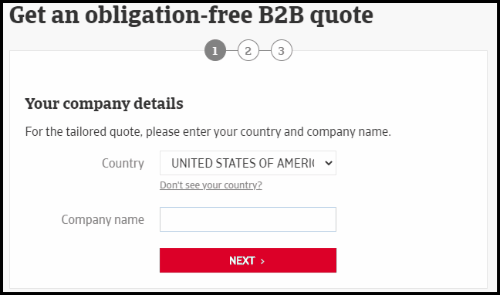Many businesses underestimate the damage bad invoices could cause.Confusion could lead to payment delays. Misunderstanding could spark disputes. |

|
You don't want these problems to arise and stand between you and your hard-earned payments.
Make your invoices so clear that your customers have exactly what they need and know exactly what to do without question.
First you'll need to have all the basics.
1. Your customer's contact details |


|
The name of your customer's company
- Check with your customer in case their official name is different from the name you call them
The address of your customer's company
- Check with your customer in case you should address their headquarters instead of their local branch or the other way around
2. Your company's details |

|
- The name of your company
- The address of your company
- The logo of your company
- All the numbers required by the country where you do business in (e.g. trade register number, value-added tax (VAT) number, goods and services tax (GST) number, employer identification number (EIN).
Then you'll need to get the crucial details right.
3. The invoice's details |

|
The unique number of the invoice
- Highlight this number by making it bold or increasing its font size. If your customer needs to find this number, they should be able to spot it within a few seconds.
The date you issue the invoice
The goods or services you delivered to your customer
- Put the descriptions or outlines of the goods or services in a list view. This helps your customer have a good idea of what they pay for.
- If the goods or services contain smaller items, detail each item (e.g. quantity, price, delivery date) so that your customer could run a check on them if they want to.
If you already provided your customer with a quote, make the invoice in line with the quote.
- Use the same wording in the invoice as in the quote to avoid misreading
- Present the goods or services in the invoice as in the quote
- Include any costs incurred that are not in the quote. If you haven't informed your customer about these costs, give an explanation in the invoice to prevent dispute.
4. Payment details |

|
Any discounts agreed between you and your customer
Any sales taxes you need to charge, including the rates and amounts
The total amount and the currency in which your customer needs to pay
- Highlight this number by making it bold or increasing its font size. Make it as clear as possible.
The payment method your customer could use
- If it's payment by bank transfers, provide your company's account name and account number.
- If it's payment by credit cards, provide a link where your customer can pay immediately.
The instruction for payment if applicable
- State clearly if your customer needs to provide the invoice's unique number or their customer number when making payment
The due date for payment
- Write the actual date next to your payment terms to avoid miscalculation. For example, if you issue an invoice on 1st January and the payment terms say "Payment 30 days after invoice date", you should put the due date "31st January" next to "Payment 30 days after invoice date."
- Highlight the due date by making it bold or increasing its font size. Make it as clear as possible.
5. Your customer's requirements |

|
Sometimes your customer may request extra information (e.g. purchase order number, reference number) to be added to the invoice. Make sure there is enough room for it and your customer can find it easily.
6. Payment terms |

|
If you and your customer have agreed on certain payment terms, especially incentives to pay early and disincentives to pay late, it's useful to mention them in the invoice.
Extra tips
Besides the six things above, here are three extra tips on presenting and delivering your invoices.
1. Keep the most important information in one page
If you have too much information in an invoice, put the most important things in the first page (i.e. your company's details, your customer's contact details, and payment details) and attach the rest as an appendix.
This is better than shortening your invoice. Your customer may come back with questions because there is not enough information.
2. Use the PDF format when emailing
If you send the invoice via email, convert it into PDF to avoid frauds or unintentional changes when your customer processes it.
3. Make your invoice easy to locate
Put the invoice's unique number in the invoice's filename and the email subject line. This makes it easy for you and your customer to search for the invoice in overloaded inboxes.
Getting your invoices right is the first step towards payment. If your customers still don't pay, the next step would be following up and asking them to pay.
If you've already done that and still haven't received payment, consider getting external help.
An experienced and professional collections agency with the right approaches can encourage your customers to pay, while maintaining your business relationships.
With Atradius Collections, you can use the online service to:
- Know right away how much it costs to collect your outstanding invoices. Get a free quote here.
- See real-time updates on the collections progress
- Get paid as soon as your customers pay their outstanding invoices
You've worked hard on creating good invoices. Let the experts work hard on collecting them for you.

